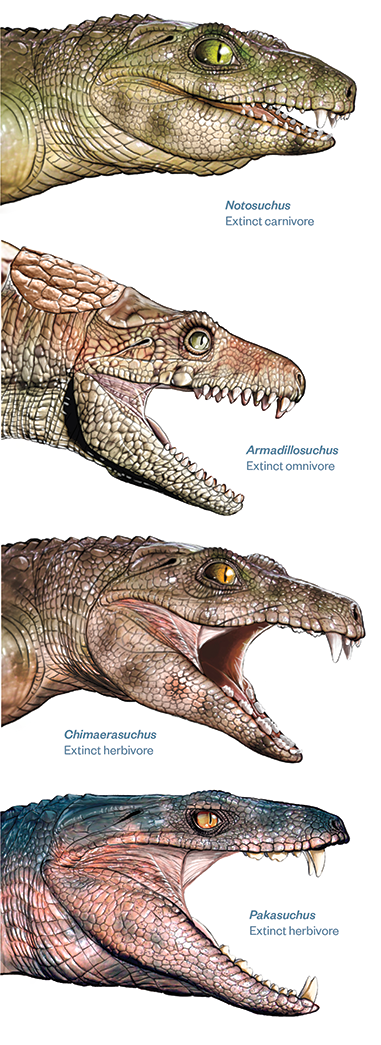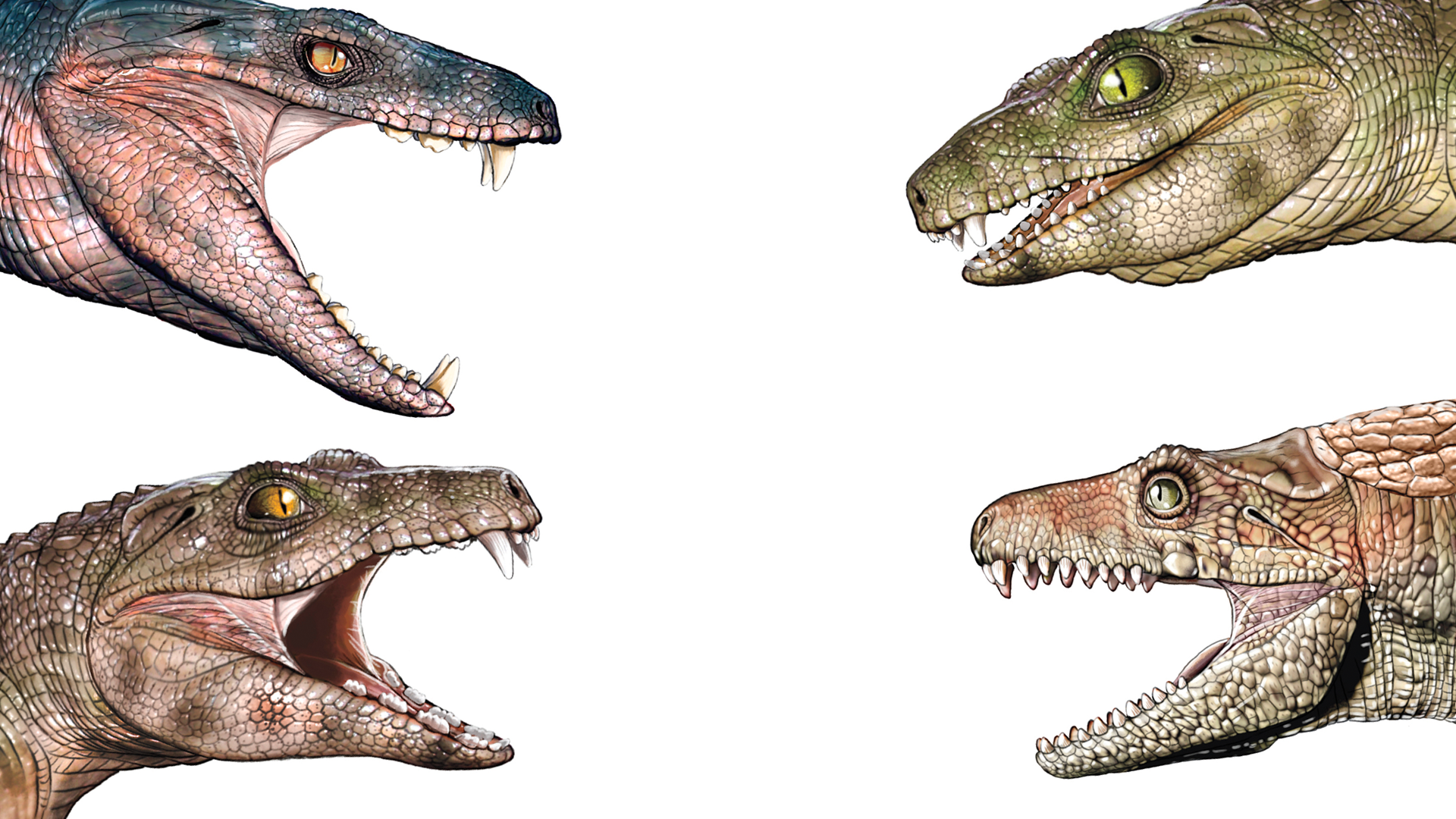 Dinner time for some ancient crocodylians may have involved a lot more flowers and plants than fish and game. Researchers at the U used complex 3-D scans and casts of different extinct crocs from around the world and found that vegetarianism evolved at least three separate times throughout history.
Dinner time for some ancient crocodylians may have involved a lot more flowers and plants than fish and game. Researchers at the U used complex 3-D scans and casts of different extinct crocs from around the world and found that vegetarianism evolved at least three separate times throughout history.
U graduate student Keegan Melstrom and Natural History Museum of Utah chief curator Randall Irmis took highly detailed digital scans of 146 teeth and mapped them like miniature mountains, measuring the complexity of each tooth shape. Studies of modern mammals and reptiles have shown that the more complicated the teeth are, the more plant material the animal eats, Melstrom says, and so the crocodile teeth results were interpreted based upon what we understand about living species.
The researchers’ results are published in Current Biology. Contrary to the common perception that crocodylians have gone along unchanged since their origin more than 200 million years ago, Melstrom and Irmis found further evidence that crocs of the past were extremely varied and would have looked strange to us. Although there were semi-aquatic ambush predators during the age of dinosaurs (Mesozoic Era), there were also crocodile relatives that lived on land and were more omnivorous in their tastes. There were even some that primarily dined at the prehistoric salad bar. “The most interesting thing we discovered was how frequently it seems extinct crocodyliforms ate plants,” says Melstrom.
These herbivorous crocodile relatives drag out a mystery. What led to the repeated evolution of plant-eating crocs? Though it might be tempting to think that these herbivorous reptiles evolved in places where plant-eating mammal relatives were absent, the fossil record doesn’t bear out that idea. The herbivorous crocodylians lived alongside plant-eating mammal relatives, potentially picking from a similar bill of prehistoric fare. “What this says to me is that you don’t need a single special environment for this to happen,” Melstrom says. “It’s a dietary strategy that’s really successful.”
To learn more about this research, click here.




Comments
Comments are moderated, so there may be a slight delay. Those that are off-topic or deemed inappropriate may not be posted. Your email address will not be published. Required fields are marked with an asterisk (*).